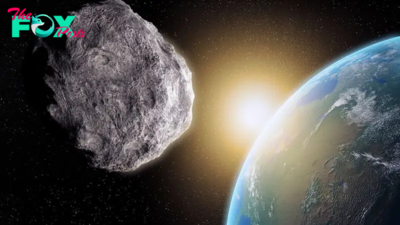Science
'Spiders on Mars' fully awakened on Earth for 1st time — and scientists are shrieking with joy
NASA scientists on Earth have recreated the creepy black "spiders" that litter the surface of Mars. The breakthrough left the researchers "shrieking" with joy and could help uncover further secrets about the Mysterious structures.
"Spiders on Mars" is the name given to a geological feature, known as araneiform terrain, that is visible in multiple locations on the Red Planet. In these places, hundreds of dark crack-like structures appear on the planet's surface, each with potentially hundreds of individual lines, or "legs." When viewed from above, these tightly grouped deformations, which can be more than 3,300 feet (1,000 meters) wide, look like a hoard of spiders scurrying across the Martian landscape.
Mars orbiters first spotted the spiders in 2003, and the features have continually popped up in satellite images ever since. At first, these stationary arachnids were a complete mystery, but scientists eventually determined that the spiders form when carbon dioxide (CO2) ice on the planet's surface suddenly sublimates — or turns into gas without first melting into liquid.
In a new study, published Sept. 11 in The Planetary Science Journal, researchers mimicked this process on a smaller scale using a specialized laboratory chamber to create a near-perfect miniature version of the spiders.
For the study's lead author Lauren Mc Keown — a planetary geomorphologist at NASA's Jet Propulsion Laboratory (JPL) in California, who has been working on recreating these spiders for five years — the moment of finally birthing the Martian critters was almost too much to handle.
"It was late on a Friday evening [when the experiment succeeded] and the lab manager burst in after hearing me shrieking," Mc Keown said in a statement. "She thought there had been an accident."
Related: 15 Martian objects that aren't what they seem
-

 Science5h ago
Science5h agoWhich animals are evolving fastest?
-

 Science5h ago
Science5h agoScientists finally know why ultraviolent superstorms flare up on Uranus and Neptune
-

 Science5h ago
Science5h agoMonster black hole is starving its host galaxy to death, James Webb telescope reveals
-

 Science11h ago
Science11h ago'Completely unexpected': New type of wood discovered by scientists dubbed 'midwood'
-

 Science22h ago
Science22h agoFall equinox 2024: When it is, why it happens and what to look for
-

 Science22h ago
Science22h agoA long-lost moon could explain Mars' weird shape and extreme terrain
-

 Science1d ago
Science1d agoPolaris Dawn Sets New Space Altitude Record—and There’s More to Come
-

 Science1d ago
Science1d agoGreenhouse gas 80 times more potent than CO2 is rising in the atmosphere — and fast
















